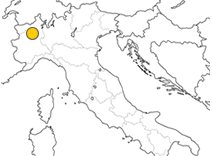-
 Northern Italy: The Pilgrim route from Aosta to PaviaCycle along the ancient “Via Francigena” (Way to Rome) from the Italian Alps to the plains of Piedmont and Lombardy
Northern Italy: The Pilgrim route from Aosta to PaviaCycle along the ancient “Via Francigena” (Way to Rome) from the Italian Alps to the plains of Piedmont and Lombardy

The Via Francigena is a historical itinerary leading to Rome from Canterbury, a major route which in the past was used by thousands of pilgrims on their way to Rome. At the beginning of the 11th century mainly, a multitude of souls "looking for their Lost Heavenly Home" took the habit of travelling across Europe. This route bears witness to the importance of the practice of pilgrimage in medieval times; the pilgrim was to travel mostly on foot (for penitential reasons), covering about 20-25 Km a day, and was driven by a fundamentally devotional reason: the pilgrimage to the Holy Sites of Christianity. There were at the time three main centers of attraction for that journeying humanity: Rome, first of all, the site of the martyrdom of Saint Peter and Saint Paul; Santiago de Compostela, the place chosen by the apostle Saint James to rest in peace and obviously Jerusalem in the Holy Land. The pilgrim did not travel alone but in a group and he used to carry the pilgrimage emblems (the shell for Santiago de Compostela, the cross for Jerusalem and the key for Saint Peter in Rome). Along these very same pilgrim routes, an intense trading activity was carried out and armies followed the same itineraries in the course of their movements.